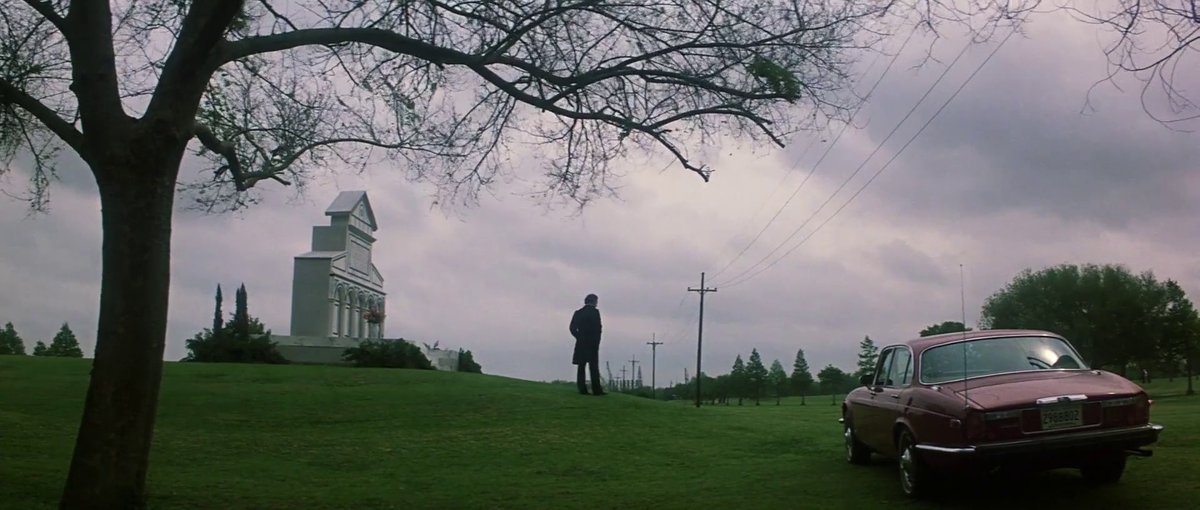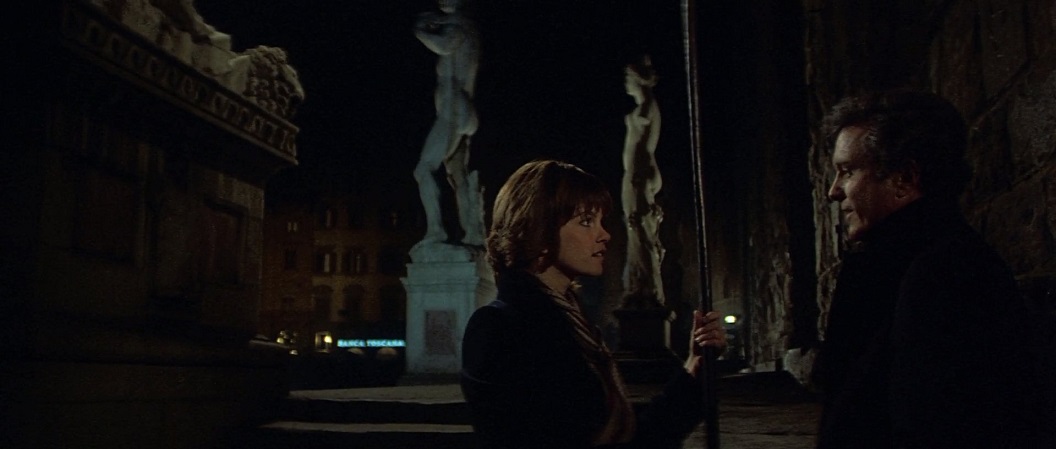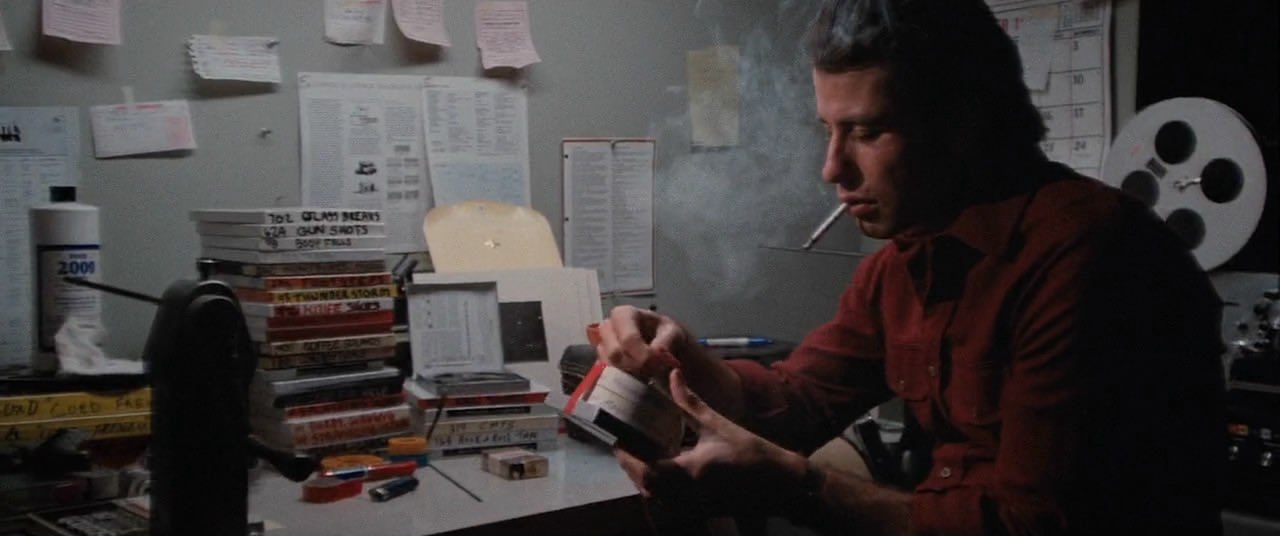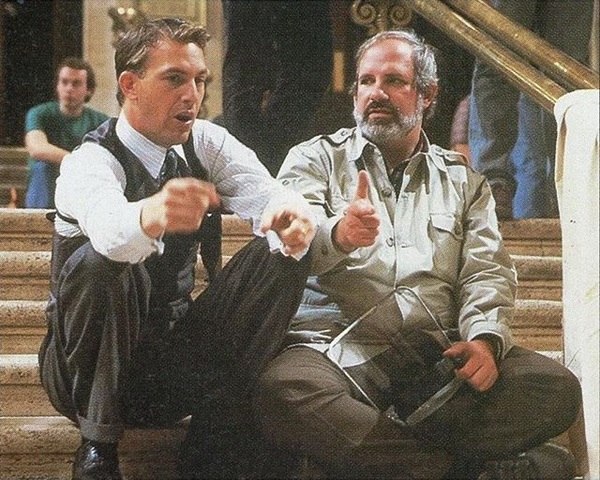ANALYSIS OF 'OBESESSION' AT MOVING PICTURES FILM CLUB

At Moving Pictures Film Club, Johnny Restall provides analysis of Brian De Palma's Obsession:
Obsession consciously creates a ghostly dialogue with Vertigo, constructing a similar labyrinth of deception, desire and derangement. Like Hitchcock’s film, it is an ambivalent interrogation of haunted memories and male fantasy, exploring an almost necrophilic love through its increasingly unstable lead, with its psychological traumas lashed to a far-fetched mystery plot. Despite ostensibly realistic settings (in San Francisco and New Orleans respectively), both films require viewers to immerse themselves in their rich, dreamlike atmosphere. Their narratives are driven more by recurring images and repeating patterns than by objective logic, building a maelstrom of uncertain identities and uncanny echoes.The opening of Obsession serves to establish the tone and visual motifs of the film. If Saul Bass’s celebrated title sequence for Vertigo emphasises the perfidious qualities of speech and visual perception, focussing on a female mouth and eye before spiralling into the depths of her pupil, Obsession highlights the unreliability of recollection, while preparing us for the slippery notions of time and fate that will define the story.
Various snapshots slide into the frame alongside the credits. Weathered and a little blurred, they fill only a small portion of the dark screen; like memories, the images are partial and incomplete. Interspersed with the photographs is a full-screen view of a grand Italian-style church, the camera drawing ominously towards its densely geometric exterior as if it were a carefully designed trap. The church also appears in the snapshots, creating a jarring effect that undermines any attempt to understand when the different images are from and how they are related – they share a location, but do not seem to belong in the same timeframe. We are given no context or identification for the pictures until a hand-written note appears in the final one: Florence, 1948. Yet as soon as the date seems settled, we move elsewhere, gradually creeping towards a mansion whose windows lighten and darken rhythmically. As we realise that the occupants are watching the very slideshow we have just been viewing, onscreen text identifies the year as 1959 and the place as New Orleans, a world away from Romanesque churches and post-war Europe. Less than three minutes have passed, but already our sense of time and destination have deliberately been confused, and not for the last time.
The prominence of the church in the opening credits alerts us that it will be important to the story (much like Vertigo’s Mission San Juan Bautista), but the way in which we next see it is both revealing and unexpected. The slides we saw depicted Michael and Elizabeth in Florence at the start of their relationship, with the church (San Miniato al Monte) the venue of their first meeting. Following the loss of his wife and daughter, Michael builds a reproduction of the church front as their tomb. The ‘San Miniato’ we now see is a replica located in Louisiana, forcibly enshrining the past in the present, no matter how out of place. Tellingly, as the finished memorial is revealed to us, a further onscreen title abruptly moves the date forward from 1959 to 1975, blurring period and location yet again: like the eternally grieving Michael, we are becoming unmoored, struggling to stay afloat in a stream of visual repetitions and sudden shifts in time. The false landmark also illuminates the story’s core themes of deceptive appearance and flawed resurrection. While undoubtedly a sincere tribute, the façade is not the original (perhaps also suggesting a self-referential wink towards inevitable criticisms of the film itself). The morbidly grandiose monument symbolises Michael’s almost religious faith in his romantic memories while hinting that such fervent belief may be fallible and unhealthy, blinding him to reality and the passing of time.
Inevitably, Michael’s 1975 trip to Florence leads him back to the real San Miniato for his first encounter with his wife’s doppelganger, Sandra. She is helping to restore a 14th century painting of the Madonna – an idealised supernatural vision of femininity that mirrors the sanctified role his own late wife has assumed in Michael’s mind. When Sandra explains the dilemma faced by the preservation authorities, her words also serve to neatly summarise the emotional conundrum posed by the film. Damaged by moisture, the paint has begun to peel, revealing an older, cruder image underneath; should they investigate this new finding, or “should they restore the original, but never know for sure what lies beneath it?” Michael favours the latter option, once again declaring the preference for romanticised perfection that is the cause of his torments, choosing to overlook uglier truths until it is too late.
The recurring spiral motif central to Vertigo is recreated in Obsession by the revolving paddle of the riverboat in the ransom scenes. Its bright red wheel relentlessly churns the murky water as the tension ratchets up, a visual warning of the dangerous depths to come. As in Hitchcock’s film, the camera encircles the characters in several key scenes, creating a dizzying sense that events are spinning out of control. The roving camerawork also creates a powerful sense of symmetry between the opening and closing sequences, as if the end were also the beginning. During the first scene, we waltz around Michael and Elizabeth as they dance at their anniversary party. For the finale, we loop round and round a final embrace, with the use of slow motion giving every movement a choreographed grace as though, once again, we were dancing.
Vilmos Zsigmond’s diffused cinematography lends the film a slippery, soft-focus edge, perhaps best utilised in two quietly stunning 360⁰ panning shots marking apparent shifts in time. The first is a literal move forward in chronology, drifting around the construction site of Elizabeth and Amy’s tomb in 1959 to return to the finished article in 1975, with a barely noticeable cut covering the transition in scenes. The second, which occurs when Sandra unlocks the sealed bedroom and discovers Elizabeth’s diaries, suggests a psychological step back through the years, prowling round the room as she begins her apparent regression in time to ‘become’ Michael’s late wife. Meanwhile, Sandra’s eventual breakdown recalls the opening slideshow to ingenious effect. She moves along a corridor of bright windows broken by intervals of thick darkness, with each alteration in lighting mimicking a changing slide and marking a further descent into her past thanks to Zsigmond’s photography and Paul Hirsch’s brilliant editing.










